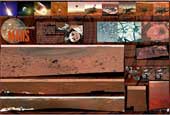
 |
|
|
|
With panache and humour the SETI Institute’s senior astronomer Dr Seth Shostak regales the reader with the life and times of a scientist whose day job is to look for aliens. Sporting a forward by SETI pioneer Frank Drake, Shostak’s book reveals what would really happen if we detected a signal from extraterrestrials, using the false alarm of 1997 (when signals from the newly-launched SOHO spacecraft were for a short time mistaken for the real thing) as an example. Within twelve hours of the initial detection being made, the news had made its way to journalists – so much for conspiracy theorists claiming it would be kept secret by the government! Dipping his toes into exoplanet discoveries, the origin of life and robotics along the way, Shostak discusses why we have yet to detect a signal. Even if there are 10,000 civilisations out there, the number of stars in the Milky Way is such that we would have to search in the order of ten million stars before we could expect to detect something, and we haven’t come close to searching that many yet. However, the sensitivity of SETI detectors is increasing with Moore’s Law, and as computation increases, so does the speed of the search. Shostak reckons that if they are out there, we’ll have found them by around 2030 with the aid of the Allen Telescope Array and the upcoming Square Kilometre Array. Often humourous (the chapter where Shostak tackles UFO believers and crop circles has frequent laugh-out-loud moments), Confessions of an Alien Hunter can also be extremely profound and inspirational, with a conclusion that aliens will likely be artificial intelligences. A sneak preview of our own future, perhaps? Keith Cooper |
|
|
|
2009 Yearbook This 132-page special edition features the ultimate observing guide for 2009, a review of all the biggest news stories of 2008, in depth articles covering all aspects of astronomy and space missions for 2009, previews of International Year of Astronomy events and much, much more. This 132-page special edition features the ultimate observing guide for 2009, a review of all the biggest news stories of 2008, in depth articles covering all aspects of astronomy and space missions for 2009, previews of International Year of Astronomy events and much, much more.Infinity Rising  This special publication features the photography of British astro-imager Nik Szymanek and covers a range of photographic methods from basic to advanced. Beautiful pictures of the night sky can be obtained with a simple camera and tripod before tackling more difficult projects, such as guided astrophotography through the telescope and CCD imaging. This special publication features the photography of British astro-imager Nik Szymanek and covers a range of photographic methods from basic to advanced. Beautiful pictures of the night sky can be obtained with a simple camera and tripod before tackling more difficult projects, such as guided astrophotography through the telescope and CCD imaging.Exploring Mars  Astronomy Now is pleased to announce the publication of Exploring Mars. The very best images of Mars taken by orbiting spacecraft and NASA's Spirit and Opportunity rovers fill up the 98 glossy pages of this special edition! Astronomy Now is pleased to announce the publication of Exploring Mars. The very best images of Mars taken by orbiting spacecraft and NASA's Spirit and Opportunity rovers fill up the 98 glossy pages of this special edition!Mars rover poster  This new poster features some of the best pictures from NASA's amazing Mars Exploration Rovers Spirit and Opportunity. This new poster features some of the best pictures from NASA's amazing Mars Exploration Rovers Spirit and Opportunity. |
||||||||||||||||||||||||